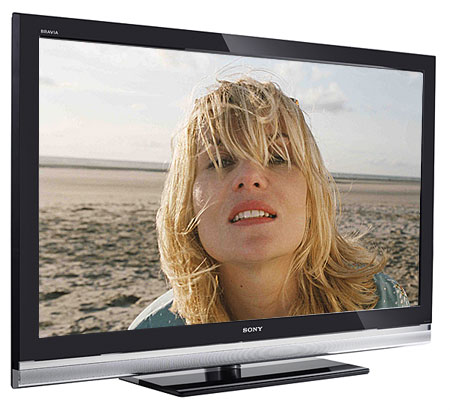Sony KDL-52W4100 LCD TV

After that review, I was eager to take a look at the next generation of Sony LCDs, especially a model in the tier below XBR, to see what spending less would get you. It took a while, but Sony finally sent me a KDL-52W4100, which lists for $1000 less than the equivalent XBR4. Both sets share many of the same features, which I'll reiterate here for your convenience while pointing out the main differences.
Features
The first thing I noticed upon removing the 52W4100 from the box was its relatively plain-Jane cabinet. Not that I'm complaining, you understand—the 52XBR4's "floating-glass" bezel was very attractive, but it was also very large. The 52W4100's bezel is of moderate size, certainly a lot thinner than the XBR4's, making it easier to fit into a limited space. It also weighs a lot less.
As with the 52XBR4, the 52W4100 doubles the rate at which complete frames are flashed on the screen, from 60 to 120 per second. This is supposed to reduce motion blur, a problem endemic to LCD TVs. If it receives a 60Hz signal (such as 480i/p, 1080i, or 1080p/60), it inserts an extra frame between the actual frames in the signal; if it receives a 24Hz signal (that is, 1080p/24), it inserts four new frames between the actual frames to reach 120Hz.
A feature called Motionflow interpolates between actual frames to create these extra frames, calculating where objects in motion should be in each new frame. This is intended to smooth out onscreen motion. If Motionflow is turned off, the set simply repeats each frame two or five times, depending on the rate of the source signal.
Another interesting feature common to many Sony TVs is the DMex (Digital Media Extender) USB expansion port on the back panel, which lets you connect proprietary DMex modules that add new functionality to the set. The only one available today is Bravia Internet Video Link ($300), which connects to your home-network router and streams online content directly to the TV from partner providers such as YouTube, Amazon On Demand, CBS, AOL, Yahoo, and Sports Illustrated among others. Unlike with the 52XBR4, I got to try this function on the 52W4100, which I'll tell you about later.
Like most TVs these days, the 52W4100 implements HDMI 1.3, which allows the use of the Consumer Electronics Control (CEC) protocol to control other HDMI 1.3 devices connected to the set. Sony calls its implementation of CEC Bravia Theater Sync.
The KDL-52XBR4 offers a number of video-processing "enhancements," such as Black Corrector, Clear White, Live Color, and Advanced Contrast Enhancer. However, I normally find that these degrade the picture rather than improve it, so I leave them turned off.
Unlike the 52XBR4, the 52W4100 offers TV Guide On Screen, an electronic program guide for broadcast TV channels. This is a nice touch, though probably superfluous for most users who have cable or satellite service with their own EPGs.
- Log in or register to post comments



































































